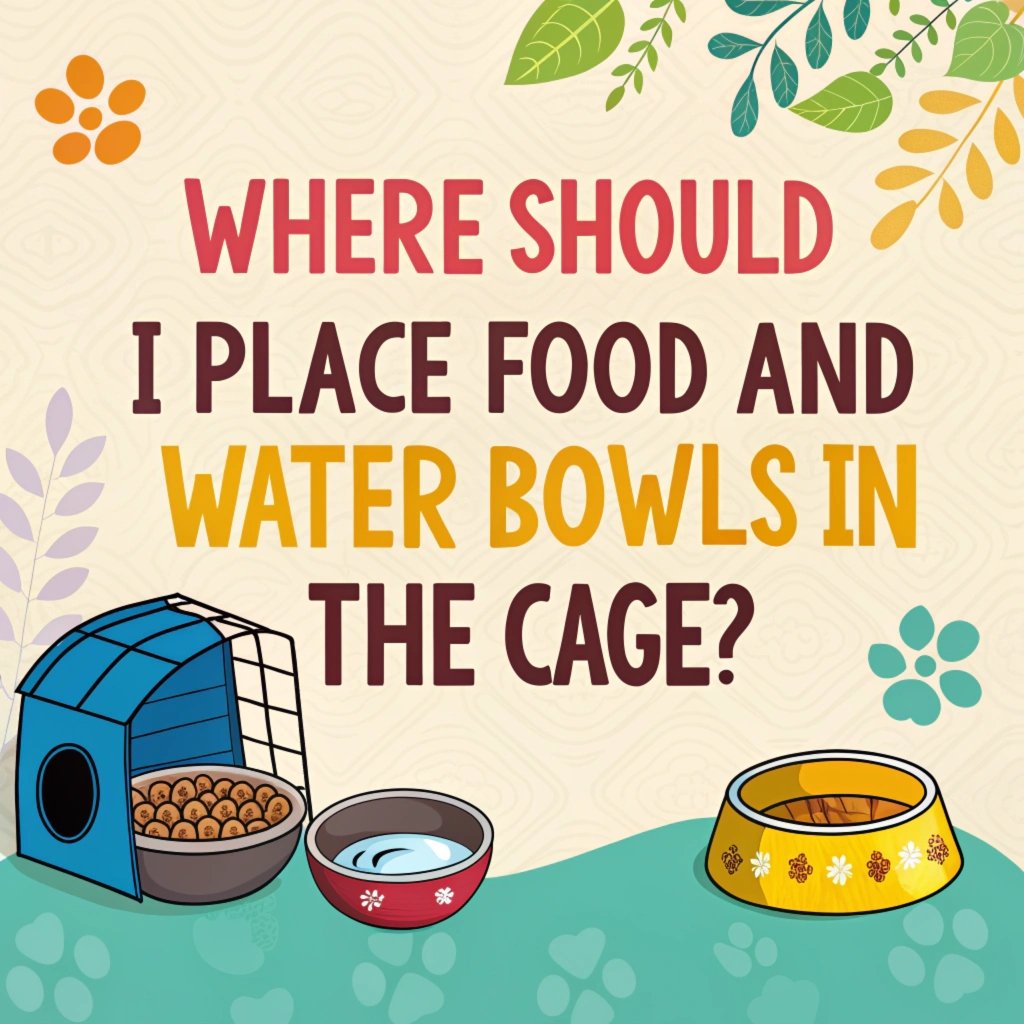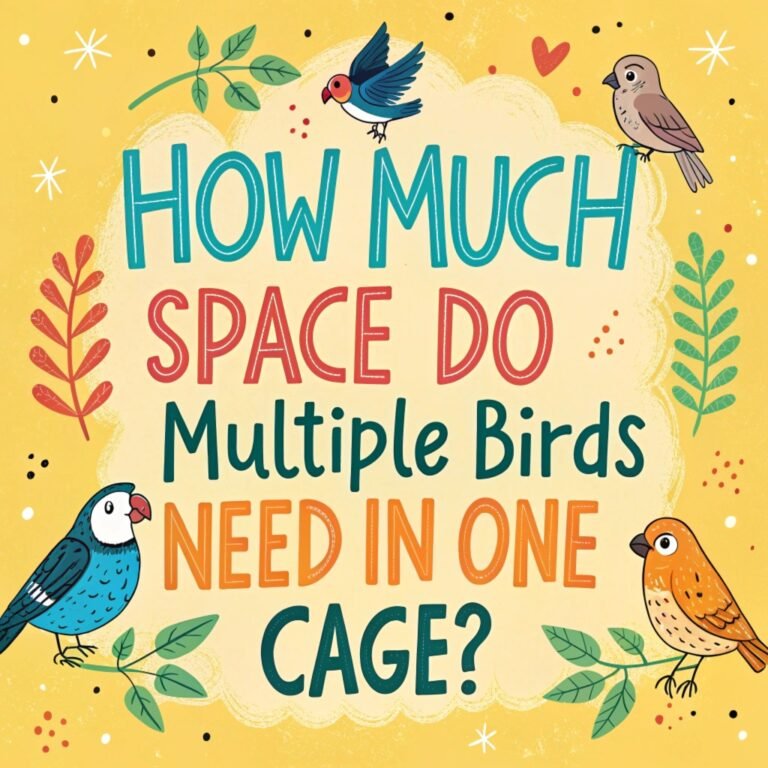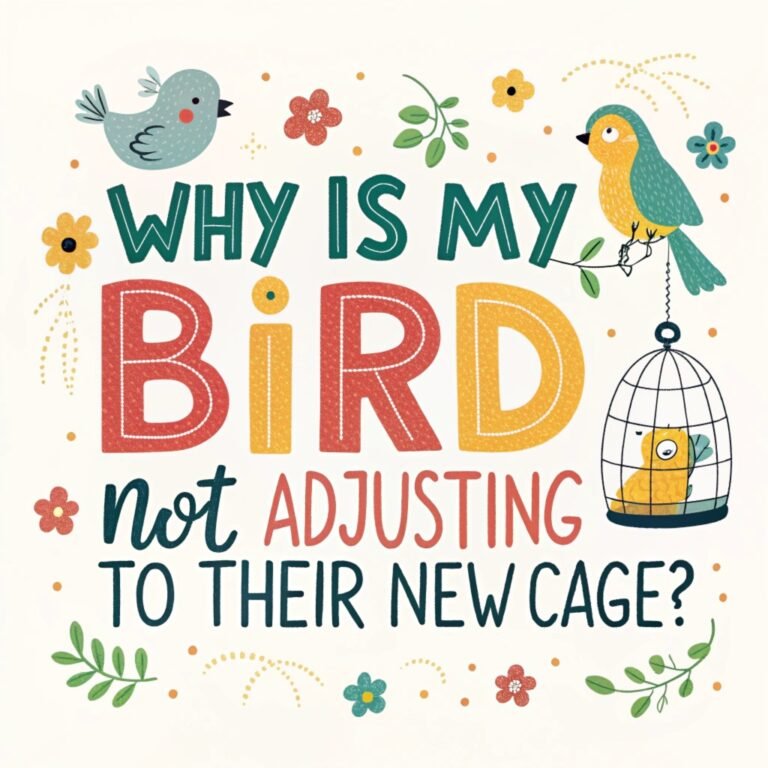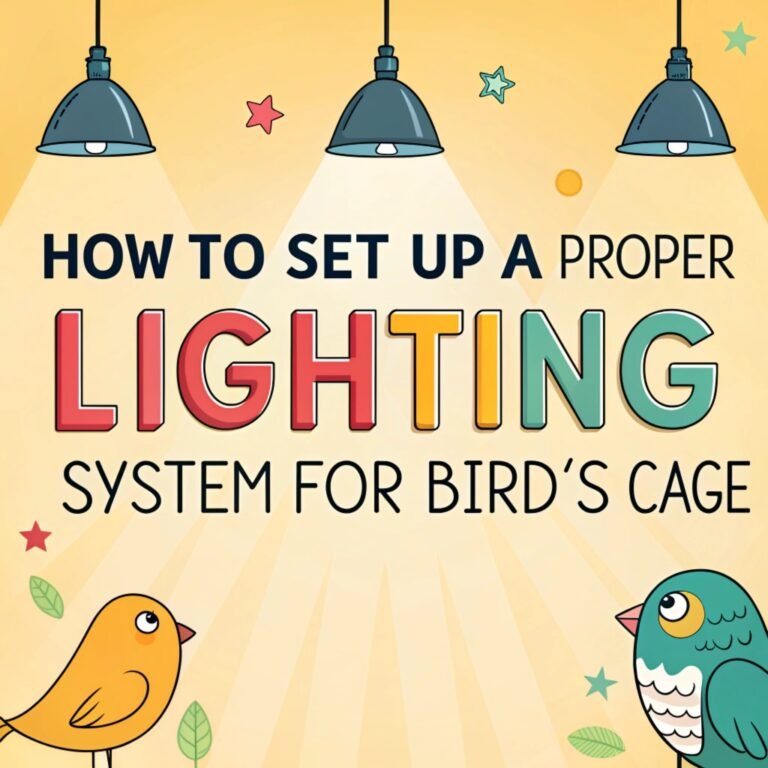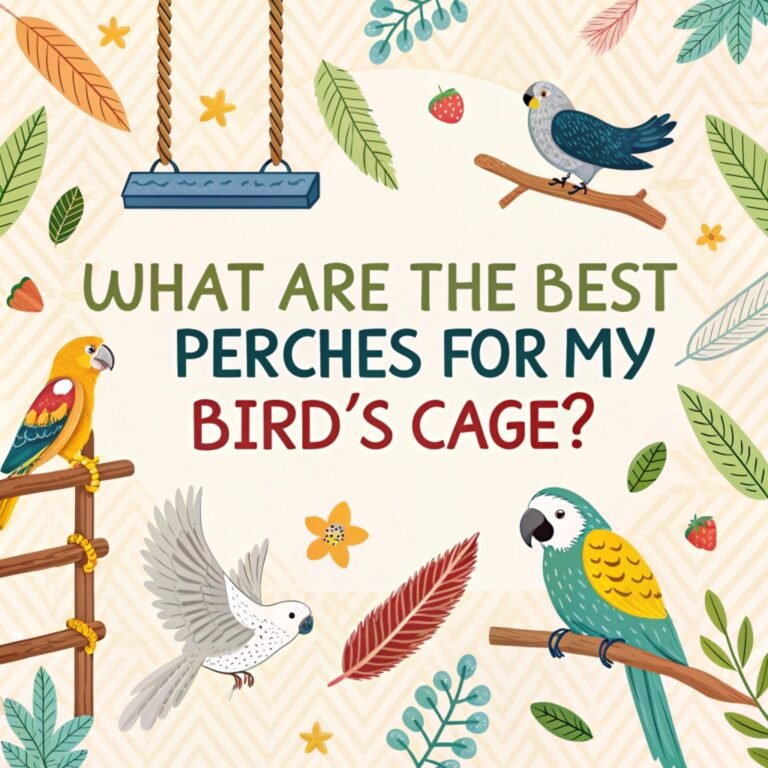Where Should I Place Food And Water Bowls In The Cage? Tips for Optimal Placement for Your Pet’s Comfort and Health
When it comes to ensuring your pet’s comfort and health, the placement of their food and water bowls plays a crucial role.
Whether you have a bird, cat, dog, or any other pet, the right location can make a significant difference in their daily routine.
In this blog, we will explore the best practices for placing food and water bowls in cages, ensuring your pet’s happiness and well-being.
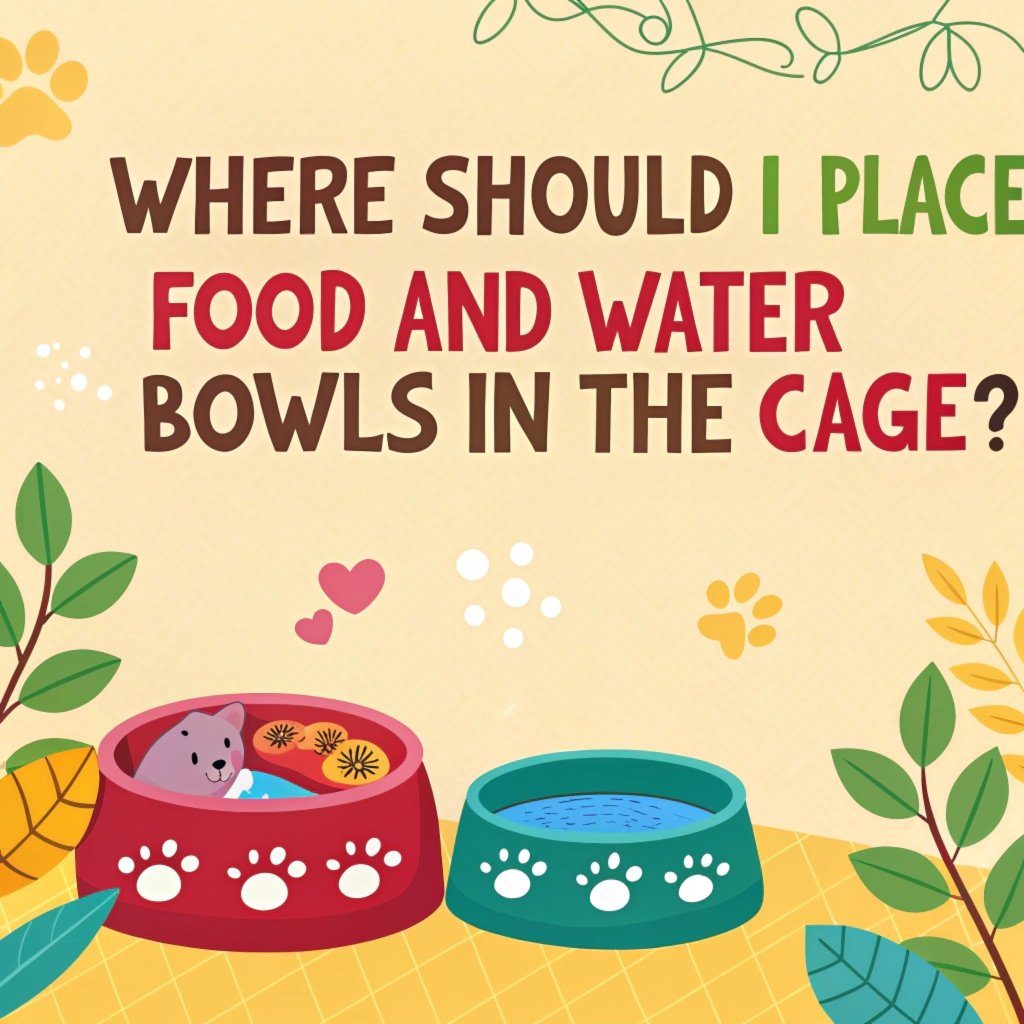
Key Takeaways
- Proper placement of food and water bowls ensures your pet’s comfort and health.
- Height matters: Adjust the bowl height to suit your pet’s size and natural posture.
- Avoid high-traffic areas in the cage to reduce stress and disturbances.
- Accessibility is key: Ensure all pets can easily reach their food and water.
- Hygiene is crucial: Regularly clean bowls to prevent contamination and illness.
- Prevent spills by using stable bowls or accessories to secure them in place.
- Cage size impacts placement: Larger cages offer more flexibility for optimal positioning.
- Multi-pet households require thoughtful placement to avoid conflicts.
- Seasonal changes may necessitate adjustments in bowl placement.
- Monitor your pet’s habits to ensure they are eating and drinking adequately.
- Adapt placement as your pet ages or their needs change.
Why Placement of Food and Water Bowls Matters
The location of your pet’s food and water bowls is more than just a matter of convenience. It directly impacts their eating habits, comfort, and overall well-being.
Proper placement can encourage healthy eating patterns, reduce stress, and prevent potential health issues.
When bowls are placed in optimal positions, pets feel secure while eating and drinking, which is crucial for their mental and physical health. Incorrect placement can lead to anxiety, reduced appetite, or even dehydration.
By understanding the importance of bowl placement, you can create a more pet-friendly environment that promotes positive behaviors and supports your pet’s natural instincts.
Remember, each pet is unique, so observing their preferences and adjusting accordingly is key to finding the perfect spot for their food and water bowls.
Understanding Your Pet’s Natural Behavior
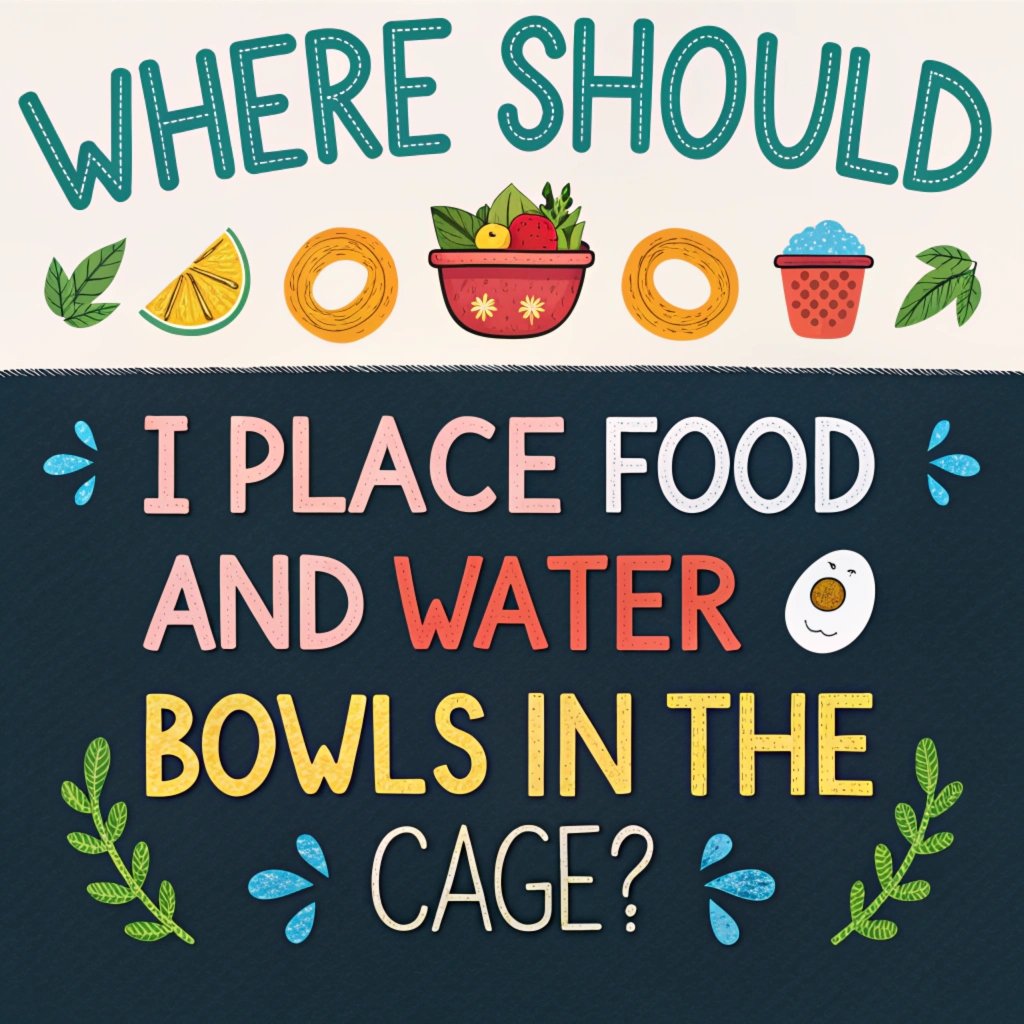
To determine the ideal placement for food and water bowls, it’s essential to consider your pet’s natural behavior. Different species have varying preferences and instincts when it comes to eating and drinking.
For instance, birds often prefer elevated feeding stations that mimic their natural habitat, while cats may feel more comfortable with bowls placed away from their litter box.
Dogs, being pack animals, might prefer eating in a social setting. Observing your pet’s behavior can provide valuable insights into their preferences.
Pay attention to where they feel most relaxed and secure in their cage or living space. Some pets may prefer to eat in a quiet corner, while others might enjoy being near their favorite resting spot.
By aligning bowl placement with your pet’s natural instincts, you can create a more harmonious and stress-free feeding environment.
Choosing the Right Height for Food and Water Bowls
The height of food and water bowls is a critical factor that often goes overlooked. Proper bowl elevation can significantly impact your pet’s comfort and health.
For small animals like hamsters or gerbils, ground-level bowls are typically suitable. However, for larger pets such as dogs or cats, elevated bowls may be more appropriate.
The ideal height should allow your pet to eat and drink without straining their neck or back. As a general rule, the top of the bowl should be level with your pet’s lower chest when they’re standing.
For birds, consider perch-mounted feeders or bowls attached to the side of the cage at an appropriate height.
Remember that puppies and kittens have different needs than adult animals, so be prepared to adjust bowl height as they grow.
By ensuring the right bowl height, you can promote better posture, reduce the risk of digestive issues, and make mealtime more comfortable for your pet.
Avoiding High-Traffic Areas in the Cage

Placing food and water bowls in high-traffic areas of the cage can lead to unnecessary stress for your pet. These busy spots may cause your pet to feel anxious or interrupted during meals, potentially affecting their eating habits.
Instead, opt for quieter corners or areas where your pet can eat and drink undisturbed. For birds, avoid placing bowls near doors or frequently used perches.
In multi-pet households, ensure each animal has its own designated feeding area to prevent competition or intimidation.
However, be cautious not to place bowls in extremely isolated spots, as some pets prefer to have a clear view of their surroundings while eating.
Strike a balance between privacy and visibility to create a comfortable feeding environment.
Regularly observe your pet’s behavior to determine if the current location is suitable or if adjustments are needed. Remember, a calm and secure feeding area can contribute to better overall health and well-being for your pet.
The Importance of Accessibility for All Pets
Accessibility is a crucial factor when placing food and water bowls in a cage, especially for households with multiple pets or animals with different needs.
Ensure that all pets, regardless of their size, age, or physical capabilities, can easily reach their food and water. For cages with multiple levels, consider placing bowls on different floors to accommodate pets that may have difficulty climbing.
In multi-pet households, provide enough bowls to prevent competition and ensure each animal has equal access to food and water.
For pets with mobility issues or senior animals, place bowls in easily reachable locations that don’t require excessive movement or strain.
If you have small and large pets sharing a space, consider using elevated feeders for larger animals while keeping ground-level options for smaller ones.
Regular observation of your pets’ feeding behaviors can help you identify and address any accessibility issues promptly. By prioritizing accessibility, you create a more inclusive and stress-free feeding environment for all your pets.
Keeping Food and Water Bowls Clean and Hygienic
Cleanliness and hygiene are paramount when it comes to your pet’s food and water bowls. Regular cleaning helps prevent the growth of harmful bacteria and ensures your pet’s health.
Choose bowl locations that are easy to access for daily cleaning and refilling. Avoid placing bowls in areas prone to dust, debris, or cage litter.
For water bowls, consider using a location where spills won’t create a mess or cause discomfort to your pet.
Stainless steel or ceramic bowls are often preferred as they’re easier to clean and less likely to harbor bacteria compared to plastic options.
Implement a daily cleaning routine for both food and water bowls, using pet-safe cleaning products.
For birds, consider using bottle-style water dispensers to reduce contamination. In humid environments, be extra vigilant about mold growth in and around feeding areas.
By maintaining clean and hygienic feeding stations, you not only protect your pet’s health but also create a more pleasant and inviting eating environment.
How to Prevent Spills and Messes in the Cage
Preventing spills and messes is essential for maintaining a clean cage and ensuring your pet’s comfort. Choose stable, heavy-based bowls that are less likely to tip over. For birds or active pets, consider using spill-proof feeders or bowls with high sides.
Place water bowls away from bedding or nesting areas to prevent dampness and potential health issues. Use non-slip mats under the bowls to catch any spills and make cleaning easier.
For messy eaters, consider placing the food bowl in a shallow tray to contain scattered food.
In multi-level cages, avoid placing bowls directly under perches or platforms to prevent droppings from contaminating food and water.
For small animals that like to dig, use bowls that can be securely attached to the cage sides. Regularly monitor your pet’s eating habits and adjust bowl placement if you notice excessive spilling or scattering of food.
By implementing these strategies, you can significantly reduce messes, making cage maintenance easier and creating a more hygienic environment for your pet.
The Role of Cage Size in Bowl Placement
The size of your pet’s cage plays a significant role in determining the optimal placement of food and water bowls.
Larger cages offer more flexibility, allowing you to create distinct areas for feeding, playing, and resting. In spacious enclosures, you can place bowls further from sleeping areas to mimic natural feeding behaviors.
For smaller cages, be creative with vertical space by using elevated feeders or wall-mounted bowls to maximize floor area.
Consider the cage layout and your pet’s daily routine when deciding on bowl placement. In multi-level cages, distribute food and water sources across different levels to encourage natural movement and exploration.
For aquariums or terrariums, ensure that bowl placement doesn’t interfere with temperature gradients or humidity zones.
Always leave enough open space for your pet to move comfortably around the feeding area. As your pet grows or if you upgrade to a larger cage, be prepared to reassess and adjust bowl placement accordingly.
By considering cage size in your placement strategy, you can create a more natural and comfortable living environment for your pet.
Tips for Multi-Pet Households and Shared Cages
Managing food and water bowls in multi-pet households or shared cages requires careful consideration to ensure harmony and equal access for all animals.
Provide separate feeding stations for each pet to prevent competition and reduce stress during mealtimes.
Place bowls at different heights or in different areas of the cage to accommodate various species or sizes of pets.
For animals with different dietary needs, use distinct bowl colors or styles to avoid confusion.
In cases of food aggression, consider using dividers or separate feeding times to ensure each pet can eat peacefully. For small animals sharing a habitat, create multiple feeding zones to prevent one pet from dominating the food sources.
Monitor feeding behaviors closely and be prepared to adjust bowl placement if you notice any signs of stress or conflict.
In mixed-species enclosures, ensure that bowl placement doesn’t inadvertently create territorial disputes.
By implementing these strategies, you can create a more harmonious feeding environment in multi-pet households, promoting better health and well-being for all your animals.
Seasonal Considerations for Bowl Placement
Seasonal changes can significantly impact the ideal placement of food and water bowls in your pet’s cage.
During hot summer months, place water bowls in cooler areas of the cage to keep the water fresh for longer periods.
Consider using ceramic bowls that naturally keep water cooler. In winter, move bowls away from drafty areas to prevent the water from becoming too cold.
For outdoor enclosures, ensure that water bowls are placed where they won’t freeze, possibly using heated bowls in extremely cold climates.
During spring and fall, be mindful of changing sunlight patterns that might affect the temperature of feeding areas.
For birds or pets sensitive to daylight changes, adjust bowl placement to align with their natural feeding rhythms.
In humid seasons, place bowls in well-ventilated areas to prevent mold growth. Always ensure that seasonal adjustments don’t compromise accessibility or comfort for your pet.
By considering seasonal factors, you can maintain optimal feeding conditions year-round, supporting your pet’s health and well-being through changing weather patterns.
Common Mistakes to Avoid When Placing Bowls
When placing food and water bowls in your pet’s cage, it’s crucial to avoid common mistakes that could negatively impact your pet’s health and comfort.
One frequent error is placing bowls too close to litter boxes or waste areas, which can lead to contamination and hygiene issues.
Another mistake is positioning bowls in direct sunlight, causing food to spoil quickly and water to become uncomfortably warm.
Avoid placing bowls in areas with high foot traffic or near cage doors, as this can cause stress during feeding times.
Overcrowding feeding areas with too many bowls can create confusion and competition among pets.
Be cautious of placing bowls near heat sources or in drafty areas, which can affect food and water quality.
Avoid using unstable surfaces for bowl placement, as this increases the risk of spills and accidents.
Don’t place bowls in hard-to-reach corners that make cleaning and refilling difficult.
By being aware of these common mistakes, you can create a more thoughtful and effective feeding setup that promotes your pet’s well-being and makes maintenance easier for you.
Using Accessories to Secure Bowls in Place
Accessories can play a crucial role in securing food and water bowls within your pet’s cage, preventing spills and ensuring a clean environment.
Consider using bowl holders or clips designed specifically for your type of cage. These accessories can firmly attach bowls to cage walls or platforms, reducing the risk of tipping.
For birds, look for perch-mounted feeders that provide a natural feeding position while staying securely in place.
Magnetic bowls are an excellent option for metal cages, allowing for easy removal for cleaning while remaining stable during use. For small animals, consider heavy ceramic dishes or bowls with wide, stable bases that are less likely to be tipped over.
Elevated feeders with built-in bowl slots can provide a secure feeding station for larger pets. When using accessories, ensure they don’t create sharp edges or pinch points that could harm your pet.
Regularly inspect these accessories for wear and tear, replacing them as needed to maintain safety.
By utilizing appropriate bowl-securing accessories, you can create a more stable and hygienic feeding area for your pet, reducing mess and stress during mealtimes.
Monitoring Your Pet’s Eating and Drinking Habits
Closely monitoring your pet’s eating and drinking habits is essential for their health and can provide valuable insights into the effectiveness of your bowl placement.
Observe how frequently your pet visits their food and water bowls and note any changes in behavior.
Pay attention to signs of reluctance or discomfort when approaching the feeding area, which might indicate a need for repositioning.
Keep track of the amount of food and water consumed daily, as sudden changes could signal health issues or dissatisfaction with bowl placement.
For multi-pet households, ensure that all animals have equal access and are not being intimidated away from their bowls. Watch for signs of spilling or playing with food and water, which might suggest the need for different bowl types or locations.
Regularly weigh your pet to ensure they’re maintaining a healthy weight with the current feeding setup.
If you notice any concerning patterns, consult with a veterinarian to rule out health issues.
By actively monitoring your pet’s eating and drinking habits, you can quickly identify and address any problems related to bowl placement, ensuring optimal nutrition and hydration for your pet.
Adapting Bowl Placement as Your Pet Ages
As your pet ages, their needs and abilities change, making it necessary to adapt the placement of food and water bowls accordingly.
For senior pets, consider raising bowl heights slightly to reduce strain on joints and make eating and drinking more comfortable. Older animals may have reduced mobility or vision, so place bowls in easily accessible locations with clear paths.
For pets developing arthritis or other mobility issues, consider using non-slip mats around feeding areas to provide better traction.
As pets age, they may become more sensitive to temperature, so adjust bowl placement to avoid drafts or direct heat sources.
Senior birds might prefer lower perches near their food and water to conserve energy. For aging small animals, place bowls closer to their preferred resting areas to minimize unnecessary movement.
Be prepared to experiment with different bowl types and locations as your pet’s needs evolve. Regular veterinary check-ups can provide insights into age-related changes that might affect feeding habits.
By adapting bowl placement to suit your aging pet’s needs, you can ensure they remain comfortable and well-nourished throughout their golden years.
FAQs
How often should I clean my pet’s food and water bowls?
Food and water bowls should be cleaned daily to maintain hygiene and prevent bacterial growth. Use warm, soapy water and rinse thoroughly. For a deeper clean, consider disinfecting the bowls weekly with pet-safe cleaning products.
Can I use the same bowl for food and water?
It’s best to use separate bowls for food and water. This prevents food particles from contaminating the water and allows you to monitor your pet’s food and water intake more accurately.
Should I elevate my pet’s food and water bowls?
Elevated bowls can be beneficial for larger dogs or pets with joint issues, as they reduce strain on the neck and back. However, for most small animals and birds, ground-level or perch-mounted bowls are more appropriate

Hello, I’m Amelia White, the founder of birdsfanatic.com. As a lifelong bird enthusiast and spiritual seeker, I’ve always been fascinated by the mystical connections between birds and the human experience. On this site, I share my knowledge and insights into the symbolic meanings and spiritual significance of various bird species, exploring their roles in mythology, folklore, and cultural traditions. Join me on this journey into the world of birds, where we’ll discover the hidden wisdom and guidance that these magnificent creatures have to offer.

